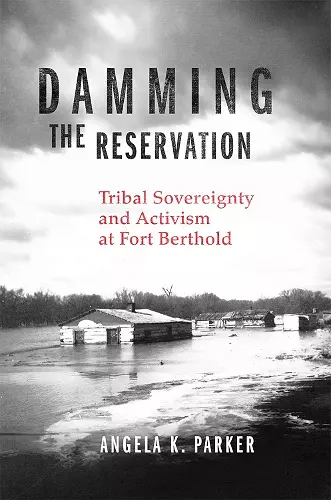Damming the Reservation Volume 23
Tribal Sovereignty and Activism at Fort Berthold
Format:Hardback
Publisher:University of Oklahoma Press
Published:10th Sep '24
£38.95
Supplier delay - available to order, but may take longer than usual.

“The single most destructive act ever perpetrated on any tribe by the United States,” Vine Deloria Jr. called it. For the Mandan, Hidatsa, and Arikara communities living on the Fort Berthold Indian Reservation in North Dakota, the construction of the Garrison Dam as part of the New Deal–era Pick-Sloan Missouri Basin Program meant the flooding of a third of their land, including their most fertile agricultural acreage, the loss of their homes, and wrenching relocation. In Damming the Reservation, Angela K. Parker, an enrolled member of the Three Affiliated Tribes, offers a deeply researched, unflinching history of the tribes’ fight to preserve and rebuild their culture, shared history, common stories, sense of place, and sovereignty.
With the richly informed and deeply personal perspective of a historian and descendant of those who survived these events, Parker tracks the riverine communities from 1920 to 1960, in the years before, during, and after the Army Corps of Engineers did its devastating work. By studying the inextricable link between on-the-ground conditions and national policy, she builds a cohesive narrative for twentieth-century Native American history that hinges on the assertion of Indigenous sovereignties. These battles over land, water, and resources that constitute the “territory” required to maintain a working sovereign body are at the very heart of the Native American past, present, and future. The author shows how Indigenous resistance to the Garrison Dam created a new generation of activists, including Tillie Walker, the focus of the book’s epilogue.
Damming the Reservation documents what can happen when a settler colonial nation tramples tribal rights while exerting control over rural hinterlands: in this case, the reservation community developed a praxis of self-determination and tribal sovereignty that trickled up to the national level so that tribal meanings came to saturate federal Indian policy. This is a history whose lessons echo through today’s most pressing environmental justice crises.
“At long last, here is a book that brings the reader to a total understanding of how and why the Three Tribes were removed from their sacred bottomlands along the Missouri River.”—Gerard Barker, former Assistant Director, American Indian Relations, National Park Service, Washington, D.C.
ISBN: 9780806194615
Dimensions: unknown
Weight: unknown
272 pages